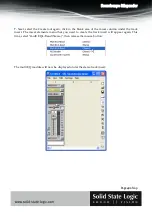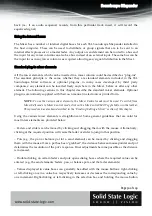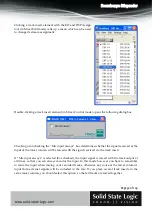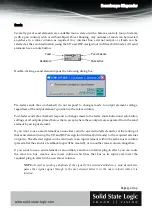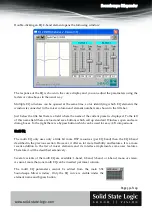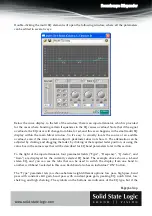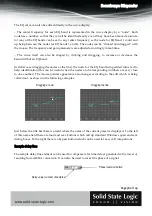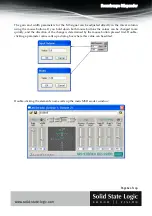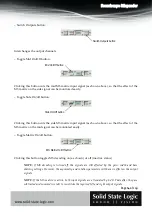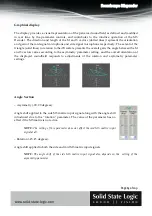
Soundscape Mixpander
Page 54 of 109
EQ 2-band
The 2-band EQs are fully parametric, allowing band pass or notch filters with variable Q
(bandwidth), cut and boost and center frequency. You can place as many EQs as you need in a
mixer column and all will be active simultaneously.
If you are interested in the technical definition of Q, it comes from the parameter that is used to
specify the Quality Factor (Q) of an inductor (coil), that in a passive filter determines how selective
(narrow) the filter is. High Q means high quality and therefore a narrow filter. The Q factor value
is calculated by dividing the center frequency by the bandwidth of the filter. If you are used to
using “octaves” instead of Q for setting an EQ, then as the “octave” value is the bandwidth of the
filter compared to the center frequency, “2 octaves” means that the bandwidth is twice the center
frequency and hence it has a Q of 0.5.
The EQ parameters can be adjusted in real-time by using the mouse buttons in the EQ parameters
value boxes in the mixer column. If you hold down both mouse buttons the EQ parameters can be
changed more quickly, and the direction of the change is determined by the mouse button pressed
first. Double-clicking on a parameter calls up a dialog box where the required value can be
entered:
The mono 2-band EQ element has two separate fully parametric sections and for the stereo 2-band
EQ, there are in fact four linked active EQs, providing two bands for each channel.
NOTE:
In
the
small
view
mode
of
the
mixer
it
is
not
possible
to
view
the
second
EQ
band.
However
it
is
displayed
in
the
full
view
mode,
which
can
be
selected
by
pressing
the
[X]
key
on
the
keyboard
or
by
ticking
“Full
Column
Size”
under
the
View
menu.









